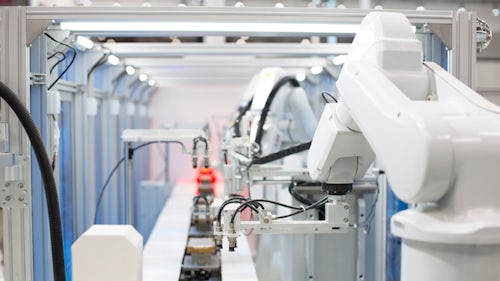Implement advanced robotics in the journey to the factory of tomorrow
The field of industrial robotics has reached the next level of automation, with improved production flexibility and reduced programming time. It is essential to know where your company stands in the journey to advanced robotics to understand how to implement these new technologies.
Download our white paper to discover how companies are already implementing these technologies and the necessary practices to meet the challenges of complexity, customization, and openness, ultimately improving their time-to-market.
Use advanced robotics to meet the goal of flexibility in manufacturing
Advanced robotics save time and optimize production between robots and human collaborators. They can adapt and continuously improve from data collected by the Industrial Internet of Things (IIoT) processed with artificial intelligence (AI). Because of this, advanced robotics meet manufacturing flexibility goals by enabling operations in an unknown or dynamic environment with frequently changing tasks to produce highly customized products.
Use flexible automation to address the needs of the factory of tomorrow
Advanced robotics is where today meets tomorrow. By implementing adaptive machines that can sense and react to what they are working on, factories and other facilities that rely on automation take a step toward complete customization and openness. Advanced robotics takes increasing complexity and leverages it to develop a highly connected and efficient workflow that can meet the changing needs of a diverse landscape of high-mix production output.
Improve visualization and enable early design validation with advanced robotics
Advanced robotics processes focus on implementing a comprehensive digital twin to improve visualization, enable early validation of designs, and facilitate collaboration across a business. These processes act as pillars for the future digital platform by offering core values like integrated validation for AI, data analytics using IIoT, virtual commissioning with automation systems, and an open API for near-infinite customization.
Discover how Siemens provides a flexible ecosystem with each of these technologies to address the production challenges of complexity, customization, and openness — Download the white paper to learn more.
